Instruction
Release with a “hit” to improve your golf swing
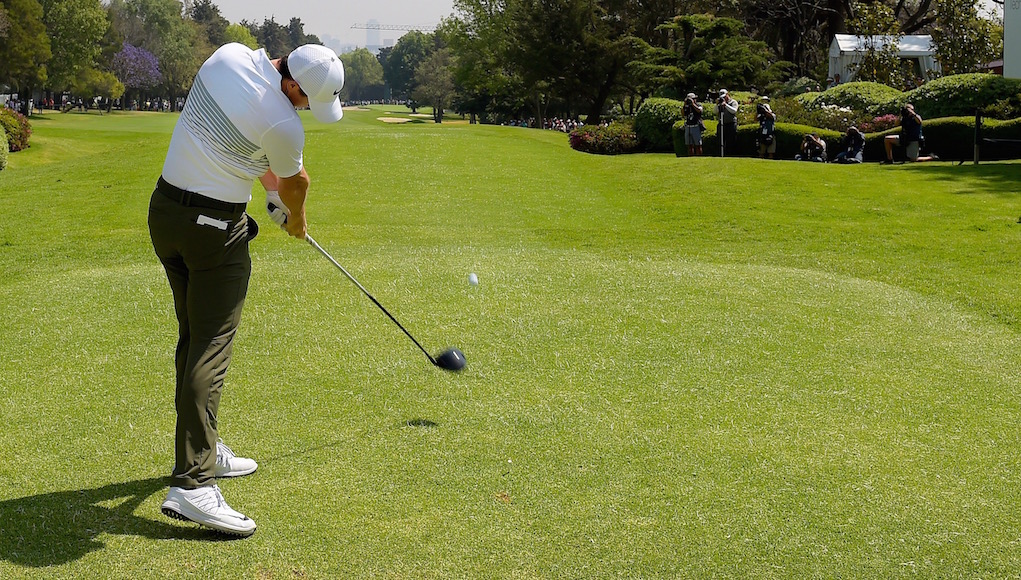
The “release” involves the swing of the club head around the hands in the forward swing. We may sense that the uncocking of the wrists, which permits the release, originates in the trailing or right hand, but for good ball-strikers it is always accompanied by a straightening of that arm. The bending and straightening of the arm is a powerful action used by humans in countless everyday tasks and in sports by the fighter to punch, by the hitter to hit in baseball, and by the pitcher and quarterback to throw in baseball and football, to name a few.
There are two essential characteristics of a proper hitting action:
- The hitting arm straightens to full extension.
- Full extension is reached past/after contact or separation.
This is why we are instructed in sports to continue punching/hitting/throwing through, not simply to, the object/ball. Golf is no exception, as a proper release sees the hitting arm continue extending past the ball in any swing, full or short, where the arm has bent or cocked to any degree in the backswing. Except for the collision with the ball and ground, the club head will continue accelerating until full extension is reached. Far ahead of his time, Ben Hogan wrote that the club head should reach maximum speed after impact.
This is the most essential element of the swing that is lacking among poor ball-strikers, and IT affects the efficiency of the strike in the following three ways:
- Allows the golfer to produce the speed/power that he or she is physically capable of.
- Allows the golfer to return the club face square to the path of the swing.
- Allows the golfer to strike the ball with a descending attack angle just before the club head reaches the bottom/low point of its arc.
As the release unfolds in-step with the straightening of the trail arm, the low point/bottom of the club-head arc will occur just prior to the point where the arm reaches full extension or is no longer straightening, dependent upon ball position. Thus, full extension must be reached sufficiently past the ball to achieve a descending attack angle. “Hitting down on the ball,” as it’s know, in most situations where the ball lies on the ground/turf, is a requirement for contacting the ball on the “sweet spot” of the club face before excessive interaction between the club head and ground/turf can occur that can rob distance-controlling speed and spin-producing friction. Expressed another popular way, only by hitting past the ball can a golfer “compress” the ball.
It is not uncommon to hear a golfer complain that he “gave it too much right hand.” In the sense that a proper hitting action involves fully extending the hitting arm, it is not possible to hit too hard with the right/trail arm/hand. Hogan wrote that on a normal full swing, you should hit as hard as you can with the right hand. He said he wished he had three right hands! The error is in completing the hitting action too early, or worse, ceasing the hitting action altogether before impact (care for some hot sauce with that “chicken wing”?).
An example of the proper hitting action, as seen in baseball by MLB player Adrian Gonzalez. The trail arm straightens from a cocked position before impact to a fully extended position past impact.
A proper throwing motion, shown here by NFL quarterback Cam Newton, features the same two essential characteristics as a proper hitting action.
Seen from down-the-line of flight, PGA Tour star Rory McIlroy exhibits the proper hitting action.
Seen face-on, LPGA Tour player Na Yeon Choi exhibits the proper hitting action.
A simple practice drill for helping to acquire the skill of hitting past the ball can be performed using only the trail arm with a laser pointer or flashlight held in the hand. Address a ball normally with your lead arm off to your side, your trail wrist in-line with a point just behind the ball, and the light pointing there. Cock the trail arm back, simulating the backswing. The point of light should always follow the swing-target line on the ground, indicating the proper direction of the swing. Simulate the forward swing by straightening the trail arm fully and past the ball. There should be no independent hand/wrist bending or twisting in this exercise. When the trail arm has fully extended, the light point will stop. That point should be approximately 3 inches past the back of the ball, for any ball position.
I anticipate some of the reactions to be along these lines:
- What about the lead/left arm/hand? Should it not play an active role?
- Isn’t the body pivot an important component of the release?
In response, yes, actively use the left if you like. Hogan said that hitting hard with the right hand was only half of the story, and that you must hit as hard with the left as with the right. Skilled golfers use every muscle in their body in swinging the club to strike the ball. Just make sure that your trail arm continues hitting past the ball.
- LIKE140
- LEGIT34
- WOW6
- LOL6
- IDHT3
- FLOP7
- OB7
- SHANK48
Instruction
The Wedge Guy: The easiest-to-learn golf basic

My golf learning began with this simple fact – if you don’t have a fundamentally sound hold on the golf club, it is practically impossible for your body to execute a fundamentally sound golf swing. I’m still a big believer that the golf swing is much easier to execute if you begin with the proper hold on the club.
As you might imagine, I come into contact with hundreds of golfers of all skill levels. And it is very rare to see a good player with a bad hold on the golf club. There are some exceptions, for sure, but they are very few and very far between, and they typically have beat so many balls with their poor grip that they’ve found a way to work around it.
The reality of biophysics is that the body moves only in certain ways – and the particulars of the way you hold the golf club can totally prevent a sound swing motion that allows the club to release properly through the impact zone. The wonderful thing is that anyone can learn how to put a fundamentally sound hold on the golf club, and you can practice it anywhere your hands are not otherwise engaged, like watching TV or just sitting and relaxing.
Whether you prefer an overlap, interlock or full-finger (not baseball!) grip on the club, the same fundamentals apply. Here are the major grip faults I see most often, in the order of the frequency:
Mis-aligned hands
By this I mean that the palms of the two hands are not parallel to each other. Too many golfers have a weak left hand and strong right, or vice versa. The easiest way to learn how to hold the club with your palms aligned properly is to grip a plain wooden ruler or yardstick. It forces the hands to align properly and shows you how that feels. If you grip and re-grip a yardstick several times, then grip a club, you’ll see that the learning curve is almost immediate.
The position of the grip in the upper/left hand
I also observe many golfers who have the butt of the grip too far into the heel pad of the upper hand (the left hand for right-handed players). It’s amazing how much easier it is to release the club through the ball if even 1/4-1/2″ of the butt is beyond the left heel pad. Try this yourself to see what I mean. Swing the club freely with just your left hand and notice the difference in its release from when you hold it at the end of the grip, versus gripping down even a half inch.
To help you really understand how this works, go to the range and hit shots with your five-iron gripped down a full inch to make the club the same length as your seven-iron. You will probably see an amazing shot shape difference, and likely not see as much distance loss as you would expect.
Too much lower (right) hand on the club
It seems like almost all golfers of 8-10 handicap or higher have the club too far into the palm of the lower hand, because that feels “good” if you are trying to control the path of the clubhead to the ball. But the golf swing is not an effort to hit at the ball – it is a swing of the club. The proper hold on the club has the grip underneath the pad at the base of the fingers. This will likely feel “weak” to you — like you cannot control the club like that. EXACTLY. You should not be trying to control the club with your lower/master hand.
Gripping too tightly
Nearly all golfers hold the club too tightly, which tenses up the forearms and prevents a proper release of the club through impact. In order for the club to move back and through properly, you must feel that the club is controlled by the last three fingers of the upper hand, and the middle two fingers of the lower hand. If you engage your thumbs and forefingers in “holding” the club, the result will almost always be a grip that is too tight. Try this for yourself. Hold the club in your upper hand only, and squeeze firmly with just the last three fingers, with the forefinger and thumb off the club entirely. You have good control, but your forearms are not tense. Then begin to squeeze down with your thumb and forefinger and observe the tensing of the entire forearm. This is the way we are made, so the key to preventing tenseness in the arms is to hold the club very lightly with the “pinchers” — the thumbs and forefingers.
So, those are what I believe are the four fundamentals of a good grip. Anyone can learn them in their home or office very quickly. There is no easier way to improve your ball striking consistency and add distance than giving more attention to the way you hold the golf club.
More from the Wedge Guy
- The Wedge Guy: Golf mastery begins with your wedge game
- The Wedge Guy: Why golf is 20 times harder than brain surgery
- The Wedge Guy: Musings on the golf ball rollback
- LIKE85
- LEGIT13
- WOW5
- LOL1
- IDHT0
- FLOP4
- OB1
- SHANK8
Instruction
Clement: Stop ripping off your swing with this drill!

Not the dreaded headcover under the armpit drill! As if your body is defective and can’t function by itself! Have you seen how incredible the human machine is with all the incredible feats of agility all kinds of athletes are accomplishing? You think your body is so defective (the good Lord is laughing his head off at you) that it needs a headcover tucked under the armpit so you can swing like T-Rex?
- LIKE0
- LEGIT2
- WOW2
- LOL0
- IDHT0
- FLOP0
- OB0
- SHANK2
Instruction
How a towel can fix your golf swing

This is a classic drill that has been used for decades. However, the world of marketed training aids has grown so much during that time that this simple practice has been virtually forgotten. Because why teach people how to play golf using everyday items when you can create and sell a product that reinforces the same thing? Nevertheless, I am here to give you helpful advice without running to the nearest Edwin Watts or adding something to your Amazon cart.
For the “scoring clubs,” having a solid connection between the arms and body during the swing, especially through impact, is paramount to creating long-lasting consistency. And keeping that connection throughout the swing helps rotate the shoulders more to generate more power to help you hit it farther. So, how does this drill work, and what will your game benefit from it? Well, let’s get into it.
Setup
You can use this for basic chip shots up to complete swings. I use this with every club in my bag, up to a 9 or 8-iron. It’s natural to create incrementally more separation between the arms and body as you progress up the set. So doing this with a high iron or a wood is not recommended.
While you set up to hit a ball, simply tuck the towel underneath both armpits. The length of the towel will determine how tight it will be across your chest but don’t make it so loose that it gets in the way of your vision. After both sides are tucked, make some focused swings, keeping both arms firmly connected to the body during the backswing and follow through. (Note: It’s normal to lose connection on your lead arm during your finishing pose.) When you’re ready, put a ball in the way of those swings and get to work.

Get a Better Shoulder Turn
Many of us struggle to have proper shoulder rotation in our golf swing, especially during long layoffs. Making a swing that is all arms and no shoulders is a surefire way to have less control with wedges and less distance with full swings. Notice how I can get in a similar-looking position in both 60° wedge photos. However, one is weak and uncontrollable, while the other is strong and connected. One allows me to use my larger muscles to create my swing, and one doesn’t. The follow-through is another critical point where having a good connection, as well as solid shoulder rotation, is a must. This drill is great for those who tend to have a “chicken wing” form in their lead arm, which happens when it becomes separated from the body through impact.
In full swings, getting your shoulders to rotate in your golf swing is a great way to reinforce proper weight distribution. If your swing is all arms, it’s much harder to get your weight to naturally shift to the inside part of your trail foot in the backswing. Sure, you could make the mistake of “sliding” to get weight on your back foot, but that doesn’t fix the issue. You must turn into your trial leg to generate power. Additionally, look at the difference in separation between my hands and my head in the 8-iron examples. The green picture has more separation and has my hands lower. This will help me lessen my angle of attack and make it easier to hit the inside part of the golf ball, rather than the over-the-top move that the other picture produces.


Stay Better Connected in the Backswing
When you don’t keep everything in your upper body working as one, getting to a good spot at the top of your swing is very hard to do. It would take impeccable timing along with great hand-eye coordination to hit quality shots with any sort of regularity if the arms are working separately from the body.
Notice in the red pictures of both my 60-degree wedge and 8-iron how high my hands are and the fact you can clearly see my shoulder through the gap in my arms. That has happened because the right arm, just above my elbow, has become totally disconnected from my body. That separation causes me to lift my hands as well as lose some of the extension in my left arm. This has been corrected in the green pictures by using this drill to reinforce that connection. It will also make you focus on keeping the lead arm close to your body as well. Because the moment either one loses that relationship, the towel falls.


Conclusion
I have been diligent this year in finding a few drills that target some of the issues that plague my golf game; either by simply forgetting fundamental things or by coming to terms with the faults that have bitten me my whole career. I have found that having a few drills to fall back on to reinforce certain feelings helps me find my game a little easier, and the “towel drill” is most definitely one of them.
- LIKE12
- LEGIT2
- WOW2
- LOL0
- IDHT0
- FLOP2
- OB0
- SHANK8
-

 19th Hole6 days ago
19th Hole6 days agoDave Portnoy places monstrous outright bet for the 2024 Masters
-

 19th Hole2 weeks ago
19th Hole2 weeks agoThings got heated at the Houston Open between Tony Finau and Alejandro Tosti. Here’s why
-

 19th Hole7 days ago
19th Hole7 days agoTiger Woods arrives at 2024 Masters equipped with a putter that may surprise you
-

 19th Hole2 weeks ago
19th Hole2 weeks agoReport: Tiger Woods has ‘eliminated sex’ in preparation for the 2024 Masters
-

 19th Hole1 day ago
19th Hole1 day agoTwo star names reportedly blanked Jon Rahm all week at the Masters
-

 19th Hole2 weeks ago
19th Hole2 weeks agoAddiction, spinal fusion, and scam artists – Everything Anthony Kim revealed in candid interview with David Feherty
-

 19th Hole2 weeks ago
19th Hole2 weeks agoAnthony Kim says doctors told him that he ‘may not have much time left’ ahead of LIV return
-
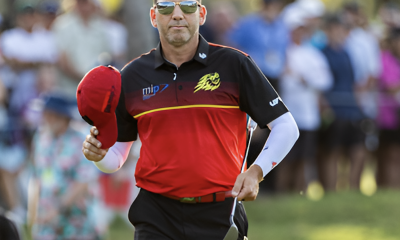
 19th Hole1 week ago
19th Hole1 week agoBrooks Koepka and Sergio Garcia make significant equipment changes as 2024 Masters looms

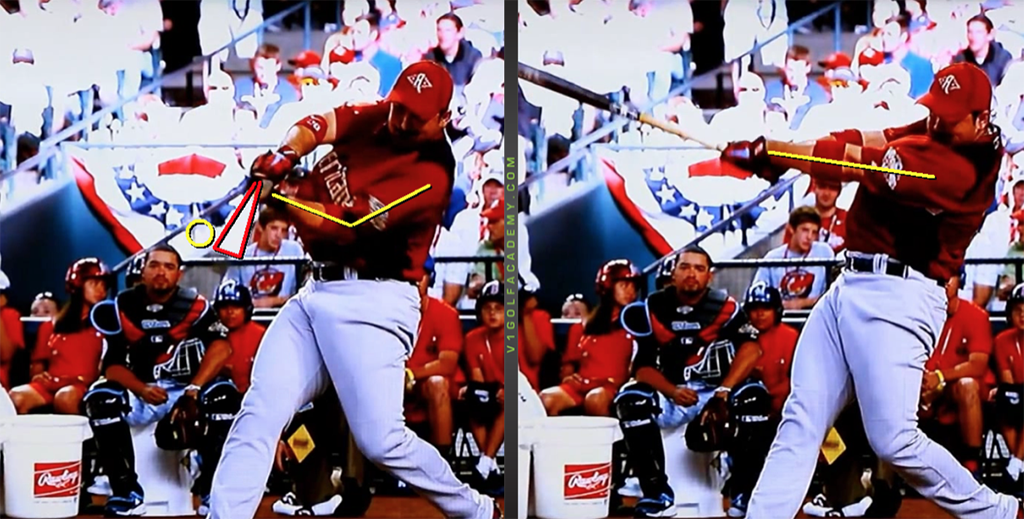
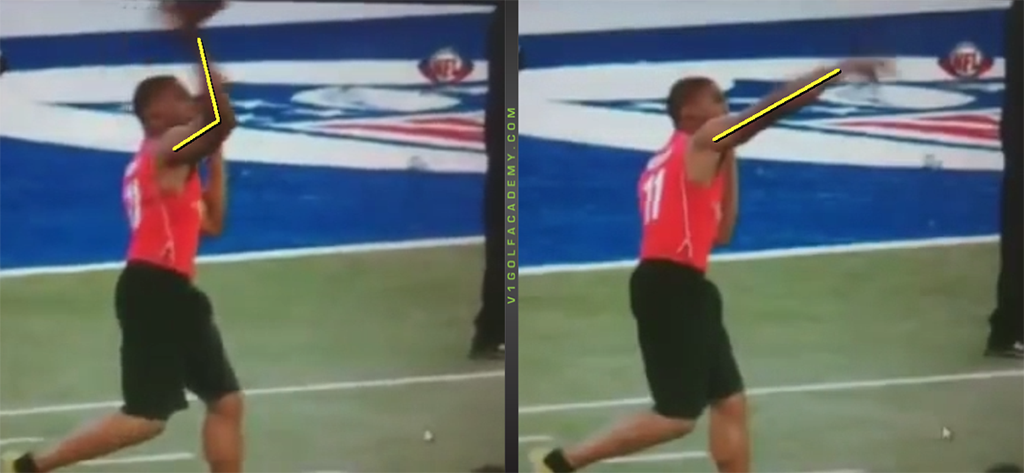
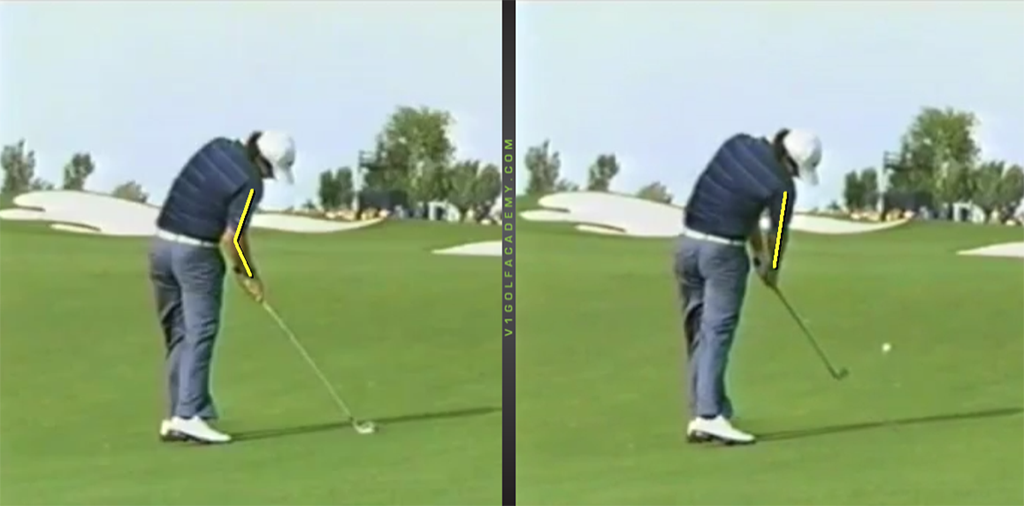
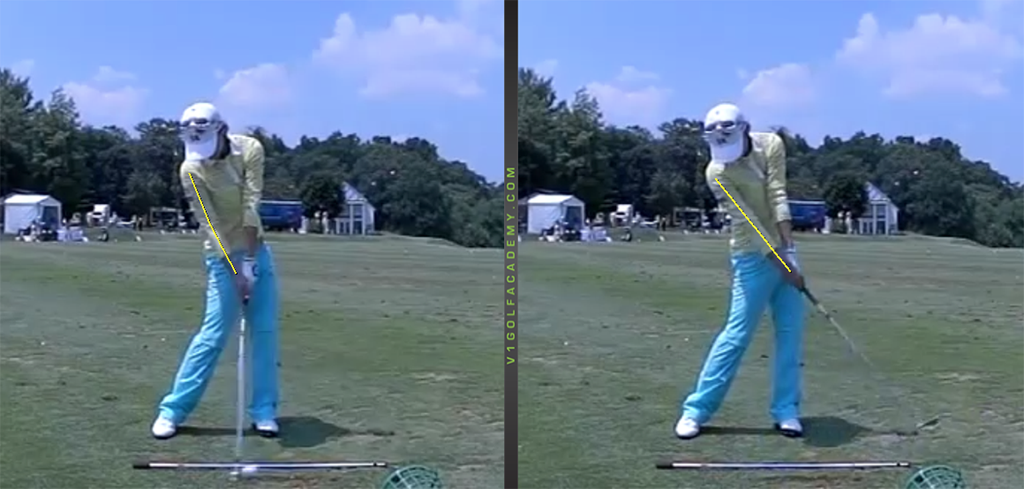

















Todd Dugan
May 16, 2017 at 3:55 pm
You said, “Everything in this article are unverifiable anecdotal assertions”. That the trail arms extends past the ball in the swings of all great ball-strikers, and in countless other sports, is easily verified by video analysis. This article illustrates several examples. In the swings of average golfers, the trail arm often straightens at or before impact. In the swings of poor golfers, the trail arm often does not fully extend at all. Make of that what you will, but the article does make clear the implications.
Edge of Lean
May 15, 2017 at 6:10 pm
Seems to be some contradiction in this article.
Full paragraph #2, sentence #2, says: “…a proper release sees the hitting arm continue extending past the ball in any swing, full or short, where the arm has bent or cocked to any degree in the backswing.”
This is confirmed in the paragraph after the 3 points, in sentence #2: “…full extension must be reached sufficiently past the ball to achieve a descending attack angle.”
These statements are the opposite of what you assert in the caption to the illustration of batter Adrian Gonzalez, where you state: “The trail arm straightens from a cocked position before impact to a fully extended position past impact.”
The contradiction is in the word “before.” This should read “after” to be consistent with your main assertion (unless I’m seriously misunderstanding something).
RJH
May 16, 2017 at 10:05 am
No contradiction! You will understand the consistence of meanings if you read the whole sentence as below: “The trail arm straightens from {a cocked position before impact} to {a fully extended position past impact}. Kindly note that both “before” and “past” here refer to the time when the trail hand is “cocked” or “fully extended” respectively. The “ before” impact here does not refer to the time when the trail arm is straighten.
Tim
May 15, 2017 at 12:37 pm
The average golfer doesn’t need more right hand. Why doesn’t golfwrx post a study showing muscle tension in the extremities compared to the core during the swing. You can bet the farm that for 95% of golfers the right arm would have the most tension because of this “instinctive” action to hit with the dominant arm/side. That’s probably the root cause of most golfing issues. Instinct isn’t always the best thing and just because you see something in a picture doesn’t mean it happened for the reason you think it did. The right arm extension primarily happens just because it is attached via fingers to the club and the club is moving away from the right side of the body in the last part of the swing.
Todd Dugan
May 16, 2017 at 3:33 pm
The trail arm extends to full extension past the point of separation in ALL sports that feature a hitting or throwing motion. Coincidence?
H
May 15, 2017 at 11:12 am
“It is a tale. Told by an idiot, full of sound and fury, Signifying nothing.”
Tony Luczak
May 15, 2017 at 10:54 am
It’s refreshing to hear someone talk about the importance of the right arm but unfortunately all of this info is not entirely accurate. Golf research from Dr Ferdinands has evaluated right arm extension contribution to club head speed and it is negligible. There is some contribution but other right arm factors are more important. Sometimes extension occurs after impact (one of your pics show that) so it is a perception that is real but once the ball leaves the club we have no influence over ball flight. The right arm is critical in the golf swing but it is through addiction not extension.
Todd Dugan
May 16, 2017 at 3:39 pm
Contribution to clubhead speed is just one of three ways, presented in the article, that trail arm extension past the ball affects the efficiency of the strike. There is no great ball-striker who does not exhibit this trait.
Ray Bennett
May 15, 2017 at 10:32 am
Look at the picture of the golfer at impact at the. Start if the article. His body has stalled with little body rotation which means his body rotation occurs past impact. What good is body rotation past impact? This method can only work with a release that has he clubface rotating from very open to shut through the ball position at best. The release needs to be matched to body rotation. When the body stalls as in the above pic, the player has to throw his hands and clubhead at the ball and hope for the best.
mctrees02
May 15, 2017 at 11:57 am
I assume you’re referring to the picture of Rory hitting driver at the top of this article. Have you never watched Rory’s swing before?
mctrees02
May 15, 2017 at 11:57 am
I think you’re referring to the picture of Rory at the top of this article. Have you never watched his swing before?
Ray Bennett
May 15, 2017 at 7:06 pm
Rory can swing any old way because he is an expert with 10,000+ hours of deep practice under his belt. This article targets the average golfer not the elite player, the purpose being to articulate concepts.
Double Mocha Man
May 14, 2017 at 9:02 pm
If I had a nickle for every contradictory piece of golf advice out there I could buy that membership at the local country club with a pool.
I’m thinking any advice is good, since my swing remains contradictory. I’ll be trying this out at the range tomorrow morning.
Double Mocha Man
May 14, 2017 at 6:41 pm
Yes.
James Stephens
May 14, 2017 at 5:37 pm
No.